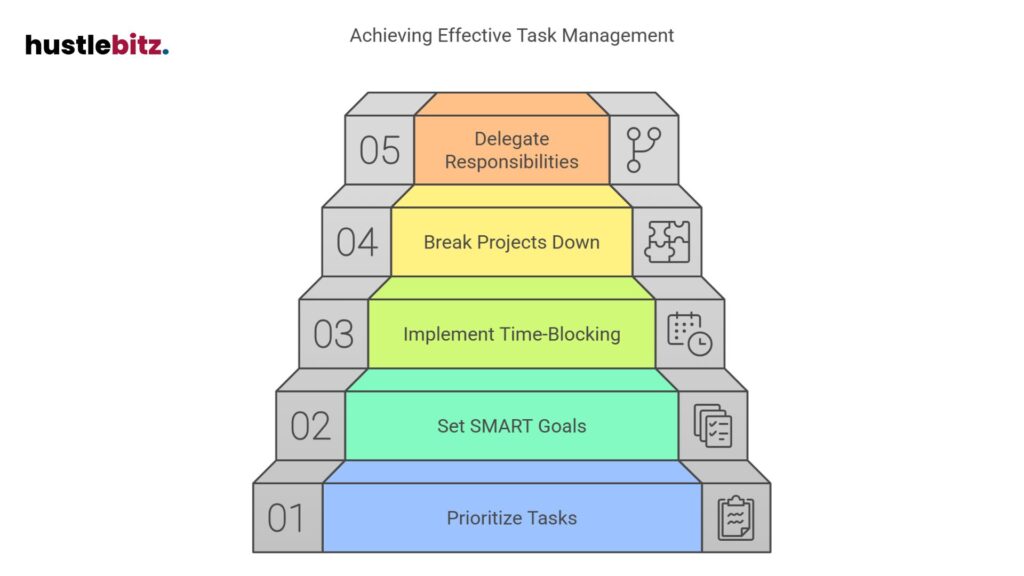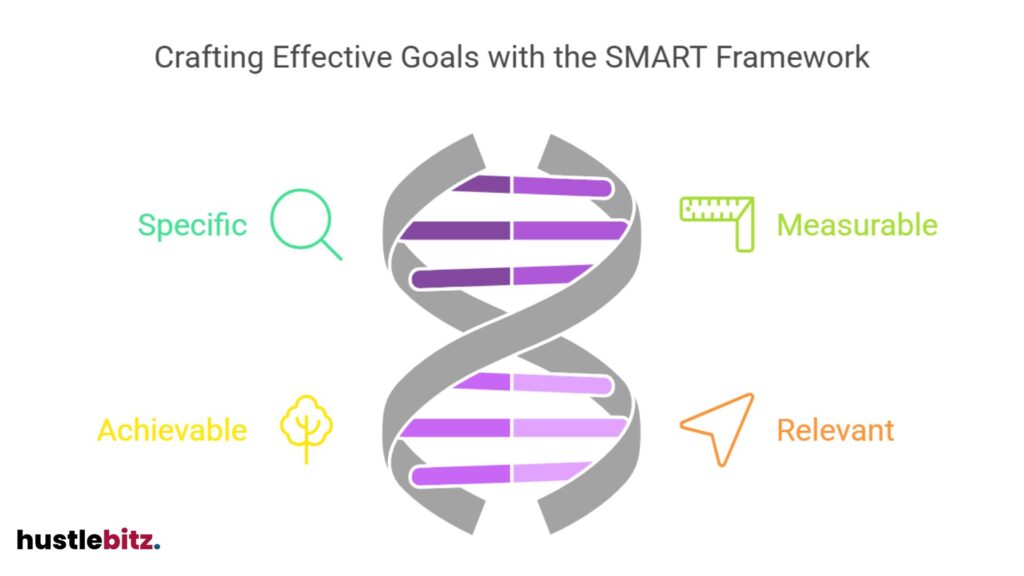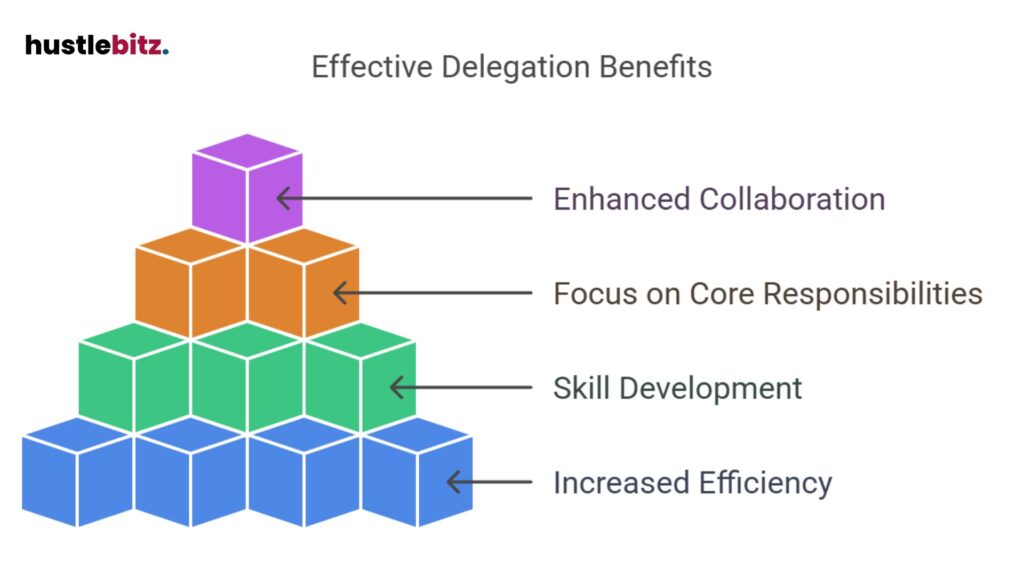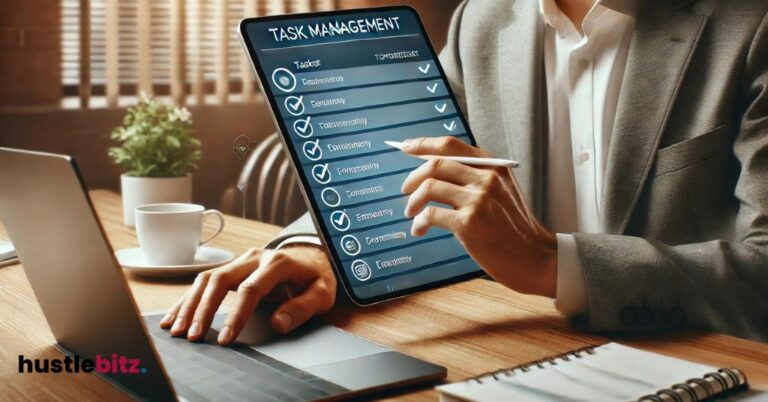Busy professionals can boost productivity through several effective task management strategies. Begin by prioritizing tasks using methods like the Eisenhower Matrix or the ABCDE technique to focus on what truly matters. Set SMART goals to ensure clarity and motivation. Employ time-blocking techniques to allocate dedicated periods for tasks, reducing distractions. The Pomodoro Technique can help maintain focus with structured work intervals and breaks. Additionally, break larger tasks into manageable steps and delegate whenever possible to enhance efficiency. Striking a balance between work and personal life is crucial. Explore more strategies to refine your approach and maximize effectiveness.
Key Takeaways
- Prioritize tasks using techniques like the Eisenhower Matrix to distinguish between urgent and important responsibilities for better time management.
- Set SMART goals to ensure clarity and measurable progress, aligning tasks with broader professional objectives.
- Implement time-blocking techniques to dedicate specific time slots for tasks, enhancing focus and reducing distractions.
- Break larger projects into smaller, manageable steps to improve clarity, efficiency, and motivation.
- Delegate responsibilities effectively to enhance productivity, foster team growth, and allow focus on core strategic initiatives.

Prioritizing Your Tasks
Effectively prioritizing your tasks is crucial for maximizing productivity and ensuring that you focus on what truly matters in your busy professional life. The ability to distinguish between urgent and important tasks is a fundamental aspect of effective time management strategies. Busy professionals often find themselves overwhelmed with a plethora of responsibilities, making it essential to employ robust task management techniques.
One effective approach to prioritizing your tasks is the Eisenhower Matrix, which categorizes tasks into four quadrants based on urgency and importance. This strategy allows you to identify what requires immediate attention, what can be scheduled for later, what can be delegated, and what should be eliminated altogether. By employing this matrix, you can streamline your workflow and enhance your efficiency.
Another valuable method is the ABCDE prioritization technique, where you assign a letter grade to each task based on its importance. This simple yet powerful strategy helps you focus on high-priority items, ensuring that time management for busy professionals becomes more manageable.
Moreover, it’s beneficial to regularly review and adjust your priorities as circumstances change. This flexibility enables you to respond effectively to unexpected challenges while maintaining focus on your key objectives.
Setting SMART Goals

Establishing clear and measurable objectives through SMART goals can significantly enhance your task management efforts, ensuring that your priorities align with your overall professional aspirations.
The SMART framework—Specific, Measurable, Achievable, Relevant, and Time-bound—provides a structured approach to effective time management, enabling busy professionals to manage their time more efficiently.
To implement SMART goals effectively, consider the following steps:
- Specific: Clearly define what you want to accomplish. Avoid vague descriptions and focus on concrete outcomes.
- Measurable: Establish criteria to track your progress. Use quantifiable metrics to assess your achievements and stay motivated.
- Achievable: Set realistic goals that challenge you but remain attainable. This balance is crucial for sustaining momentum in your task management efforts.
- Relevant: Ensure that your goals align with your broader professional objectives. This will help maintain focus and prioritize tasks effectively.

Time Blocking Techniques

Time blocking techniques offer a structured approach to scheduling, allowing busy professionals to allocate dedicated time slots for specific tasks and activities. This method promotes productive time management by enabling individuals to focus on one task at a time, reducing distractions and enhancing efficiency. By segmenting the day into blocks, professionals can prioritize tasks based on urgency and importance, ensuring that high-impact activities receive the attention they deserve.
To effectively implement time blocking, professionals should begin by identifying their most critical tasks and estimating the time required for each. It is advisable to create a visual calendar or planner that reflects these designated time blocks. This not only aids in maintaining focus but also helps manage expectations with colleagues and stakeholders about availability.
Moreover, time blocking can be tailored to fit individual work styles. For instance, some may prefer longer uninterrupted sessions, while others might benefit from shorter bursts of concentrated work followed by brief breaks. This flexibility makes time blocking one of the most effective management techniques for busy professionals.
In addition to enhancing focus, this strategy encourages a healthy work-life balance by designating time for personal activities and downtime. Ultimately, mastering time blocking can lead to a more organized day, allowing professionals to meet deadlines, reduce stress, and achieve a higher level of productivity. As a result, incorporating this approach can transform the way busy professionals manage their time and tasks.
Delegating Responsibilities

Many busy professionals underestimate the power of delegating responsibilities, which can significantly enhance productivity and free up valuable time for higher-priority tasks. By effectively leveraging the strengths of team members, professionals can improve their overall productivity and implement effective time management strategies.
Here are four key benefits of delegating responsibilities:
- Increased Efficiency: Assigning tasks to the right individuals allows for quicker completion and reduces the burden on yourself.
- Skill Development: Delegation provides opportunities for team members to enhance their management skills, fostering growth and confidence.
- Focus on Core Responsibilities: By offloading routine tasks, professionals can concentrate on strategic initiatives that drive business success.
- Enhanced Collaboration: Encouraging team involvement through delegation promotes collaboration and improves team dynamics.

Incorporating effective time management for busy professionals hinges on the ability to delegate wisely. Understanding which tasks can be assigned and to whom is vital. It involves assessing the strengths and weaknesses of team members to maximize productivity and time management.
When done correctly, delegating responsibilities not only alleviates the workload but also empowers others, creating a more engaged and efficient team.
Ultimately, mastering the art of delegation is essential for busy professionals aiming to optimize their productivity and time management. By embracing this strategy, one can achieve a more balanced workload and focus on high-impact activities that contribute to organizational success.
Breaking Tasks Into Steps
Breaking tasks into manageable steps is a crucial strategy for busy professionals seeking to enhance productivity and maintain focus in a fast-paced work environment. By dissecting a larger project into smaller, actionable components, individuals can approach the task at hand with clarity and efficiency. This method not only reduces feelings of overwhelm but also allows for a more structured way to allocate time and resources.
Effective planning is integral to this process. Professionals should begin by identifying the end goal and then outlining the necessary steps to achieve it. Each step should be specific, measurable, and achievable within a designated timeframe. This approach aligns with effective time management strategies that may include setting deadlines for each subtask, thus creating a sense of urgency that can spur motivation.
Additionally, breaking tasks into steps allows professionals to prioritize effectively, ensuring that they manage time in a way that aligns with their overall objectives. As each step is completed, there is a tangible sense of progress, which can boost morale and encourage further productivity.
Incorporating these valuable strategies into daily routines can transform how busy professionals approach their workload. By recognizing that no task is too daunting when divided into manageable parts, individuals can foster a work environment that promotes focus, reduces stress, and ultimately leads to greater success in achieving their goals.
Implementing the Pomodoro Technique

The Pomodoro Technique offers an effective method for busy professionals to enhance focus and productivity by structuring work intervals and breaks. This time management technique promotes sustained concentration while preventing burnout, making it a valuable tool for those who juggle multiple tasks.
To implement the Pomodoro Technique effectively, consider the following steps:
- Choose a Task: Identify a specific task you want to work on.
- Set a Timer: Traditionally, set a timer for 25 minutes, known as one Pomodoro. This period encourages intense focus.
- Work on the Task: Dedicate the entire Pomodoro to your chosen task, eliminating distractions.
- Take a Break: After the timer goes off, take a short 5-minute break to recharge before starting the next Pomodoro.
By utilizing this time blocking strategy, professionals can significantly enhance their time management skills. The structured intervals minimize procrastination and improve time tracking, allowing individuals to assess their productivity levels effectively.
Moreover, the Pomodoro Technique fosters a sense of urgency, compelling you to complete tasks within the designated time frame. Incorporating this method into your workflow not only aids in maintaining focus but also serves as an effective strategy for combating fatigue and improving overall work output.
As busy professionals seek to optimize their workload, the Pomodoro Technique stands out as a practical and impactful approach to task management.
Maintaining Work-Life Balance

Achieving a harmonious work-life balance is essential for busy professionals to maintain both productivity and personal well-being. Striking this balance requires effective time management strategies, as time management is essential for preventing burnout and ensuring that personal time is valued just as highly as professional obligations.
One of the key elements to maintaining this balance is proper time allocation. Professionals should prioritize their tasks, distinguishing between urgent and important activities. By doing so, they can work on time without feeling overwhelmed.
Utilizing time management tools, such as digital calendars or task management applications, can aid in organizing both work and personal commitments. These tools help to visualize tasks and deadlines, allowing for a more structured approach to daily responsibilities.
Moreover, incorporating regular breaks into the schedule is vital. Taking time to reflect on progress and reassess priorities can lead to better decision-making and increased efficiency.
Setting aside moments for self-care and relaxation allows professionals to recharge, enhancing their overall productivity.
Final Thoughts
Effective task management is crucial for busy professionals aiming to enhance productivity and maintain a healthy work-life balance. By prioritizing tasks, setting clear goals, leveraging productivity tools, and employing strategies like the Pomodoro Technique and time-blocking, professionals can optimize their workflow and focus on what truly matters. Breaking tasks into manageable steps and delegating responsibilities further enhances efficiency, allowing professionals to concentrate on high-impact activities. Ultimately, integrating these strategies into daily routines fosters a more organized, less stressful work environment, leading to sustained success and personal well-being. Regularly revisiting and refining these approaches ensures continuous improvement and adaptability in a fast-paced professional landscape.




